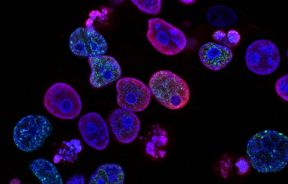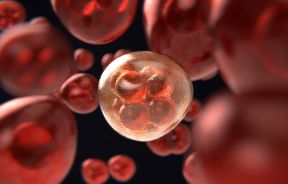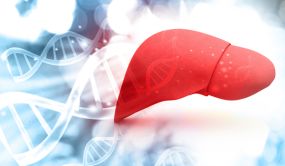Stephen Feig: The Role of Trauma in Chronic Health Conditions and Healing
Healing Trauma: Updated Insights and Approaches
Dr. Stephen Feig believes that healing from trauma is possible with the right tools and with emotional, physical, and behavioral support. By becoming more aware of trauma's impact and seeking a professional who can assist in resolving the trauma that remains embedded in the mind, body, and nervous system, resilience can grow, and an entirely new life perspective can be achieved.
Trauma can result from a wide range of distressing experiences, such as accidents, abuse, neglect, or prolonged stress. Interactions that are less obviously intense can affect someone deeply if they are sensitized to them by previous trauma. Because trauma depends on how a person experiences and interprets an event, almost any situation can feel traumatic to someone. New neuroscience confirms that trauma alters the brain's alarm system (amygdala), memory processing (hippocampus), and decision-making (prefrontal cortex), often leaving survivors stuck in a loop where the body reacts as if the threat is still present. Traumatized individuals remember past events in dysregulating ways and may perceive future events with anticipatory trauma. Past trauma can make people feel constantly on edge. When trauma is unresolved, there is a tendency for stressful bodily sensations and thoughts to arise even when there is no danger. However, it's also very common for an individual to function well in most of their life experiences, but have certain very specific experiences that are related to past trauma, causing great emotional and physical dysregulation.
How Perception Shapes the Experience of Trauma
Madison grew up in a warm, affectionate family where hugs were a natural way to express love. For her, physical touch feels safe and comforting. Katherine, on the other hand, was raised in a family that expressed love through words, with little physical affection. For Katherine, hugs are deeply personal and reserved for those she trusts after a long period of dating or developing a friendship.
At a party, Madison greets Doug with a long, heartfelt hug. Doug feels uplifted by her warmth and wants to share that feeling with others. His nervous system shifts into a protective state after hugging Madison. He turns to Katherine and offers her the same kind of hug. But Katherine, who sees hugs as intimate and private, perceives Doug's gesture as intrusive. Her body reacts with tension, her heart rate increases, and her nervous system shifts into a protective state. She interprets the hug as a violation of her boundaries and leaves the party feeling unsafe and emotionally shaken.
This example highlights how the same event—a hug—can trigger vastly different physiological and emotional responses depending on a person's past experiences and internal beliefs. Madison's nervous system interprets the hug as safe and joyful, while Katherine's interprets it as threatening. These interpretations activate different stress responses in the body, influencing heart rate, muscle tension, hormone release, and even memory formation.
Trauma isn't defined solely by the event itself, but by how the nervous system perceives and processes that event. A sudden loss in the family may devastate one person and inspire personal growth in another. The difference lies in how the event is interpreted, the meaning assigned to it, and the body's ability to return to a state of safety afterward.
Unresolved trauma can have a lasting impact on both our mental and physical health, especially when the body doesn't fully process and release the emotional charge of what happened in the past. Sometimes, individuals may not even recognize an event as traumatic until symptoms like anxiety, depression, sexual dysfunction, moodiness, anger outbursts, or avoidant behavior surface. Complex trauma refers to the psychological and emotional effects that result from prolonged or repeated exposure to traumatic events, especially those that occur during critical developmental periods such as childhood.
The Impact of Unresolved Trauma on Health
When trauma is resolved, you can think about what happened without a significant emotional charge and without a strong physiological response, such as an elevated heart rate, intrusive thoughts, or sleep disturbances. When trauma is unresolved, the body may remain stuck in a cycle of alarm, hypervigilance, and stress, which can have detrimental health effects over time. This ongoing state of stress can interfere with the body's ability to repair itself and maintain balance.
Unresolved trauma often leads to coping behaviors that may further harm health, such as eating disorders, addictions to food, substances, or pornography, sleep disturbances, and emotional dysregulation. These behaviors can compound the effects of trauma and create a feedback loop of continual physical and emotional distress. The combination of trauma, addictions, and poor health choices can increase inflammation, suppress immune function, and disrupt hormonal balance—factors commonly linked to the development of chronic illnesses.
Research has connected early-life trauma—known as Adverse Childhood Experiences (ACEs)—with increased risk for a wide range of health conditions throughout life:
- Mental Health Conditions:
- Depression
- Anxiety
- Post-traumatic stress disorder (PTSD)
- Suicide
- Substance use disorders, including alcohol and prescription drug misuse
- Physical Health Conditions:
- Heart disease
- Obesity
- Diabetes
- Chronic pain and autoimmune disorders
- Asthma and respiratory issues
- Neurological and Developmental Effects:
- Altered brain development
- Disrupted stress response systems
- Cognitive impairments such as reduced executive function and learning difficulties
- Behavioral and Social Outcomes:
- Poor academic performance
- Risky behaviors, including early sexual activity, delinquency, and violence
- Unstable employment and lower socioeconomic status
- Relationship difficulties and social isolation
Trauma activates brain regions responsible for emotion and threat detection, such as the amygdala and prefrontal cortex. This can affect mood, sleep, digestion, and blood pressure. People with unresolved trauma may remain in a state of hypervigilance, reacting strongly to minor stressors without understanding why. These patterns can become deeply embedded, shaping identity and self-image. Living in a constant state of alertness can create a disconnect between the mind and body. Many traumatized individuals feel unsafe in their own bodies and rely heavily on mental processing, which can lead to brainwave patterns associated with anxiety, insomnia, and vigilance.
The vagus nerve, which regulates the parasympathetic nervous system responsible for 'rest and digest' functions, is often affected by trauma. People with Post Traumatic Stress Disorder (PTSD) may show signs of vagal nerve dysregulation, such as digestive difficulties, sleep disturbances, increased anxiety and stress sensitivity, fatigue, and difficulty recovering from illness.
Recognizing the Physical and Emotional Signs of Unresolved Trauma—and Its Impact on Relationships
Many people don't immediately connect their physical or emotional symptoms to past trauma. Yet trauma often leaves behind a lasting imprint—not just in the mind, but in the body. This phenomenon is known as body memory, where the body retains sensations and reactions associated with traumatic experiences, even when the conscious mind has suppressed or forgotten them.
Physical Signs
Unresolved trauma can manifest through a variety of physical symptoms that may seem unrelated at first glance. These include:
- Racing thoughts and chronic anxiety
- Muscle tension, especially in the shoulders, neck, or jaw
- Digestive issues, such as bloating, nausea, or irritable bowel symptoms
- Sleep disturbances, including insomnia or restless sleep
- Fatigue or chronic pain without a clear medical cause
These symptoms often reflect a dysregulated nervous system, where the body remains in a heightened state of alertness long after the original threat has passed. The sympathetic nervous system (responsible for fight-or-flight responses) may stay overactive, while the parasympathetic system (responsible for rest and recovery) struggles to restore balance.
Emotional and Relational Signs
Emotionally, unresolved trauma can show up as:
- Mood swings, irritability, or emotional numbness
- Hypervigilance, or constantly scanning for danger
- Difficulty concentrating or making decisions
- Avoidance behaviors, such as withdrawing from relationships or responsibilities
- Overreactions to minor stressors, often without understanding why
These emotional shifts can deeply affect how individuals relate to others. In work environments, trauma may lead to difficulty trusting colleagues, misinterpreting feedback as criticism, or feeling unsafe in hierarchical structures. In friendships, people may struggle with vulnerability, fear of abandonment, or emotional detachment. In intimate relationships, trauma can manifest as fear of closeness, difficulty with physical affection, or cycles of conflict and withdrawal.
These reactions are not signs of weakness—they are survival responses. The brain, particularly the amygdala and hippocampus, may misinterpret neutral stimuli as threats, triggering emotional and physiological responses that feel disproportionate to the situation.
The Intergenerational Impact of Unresolved Trauma
Unresolved trauma in parents can significantly hinder the emotional development of their children, often in ways that are subtle yet deeply impactful. When parents carry unhealed emotional wounds, they may struggle with emotional regulation, attachment, and communication—key components in nurturing a child's sense of safety and self-worth. Children are highly perceptive and often internalize the emotional states and behavioral patterns of their caregivers. As a result, they may develop anxiety, low self-esteem, or difficulties in forming healthy relationships. Inconsistent emotional availability, heightened reactivity, or emotional numbing in parents can create an unpredictable environment, leading children to adopt maladaptive coping mechanisms. Over time, these early experiences can shape a child's worldview, influencing how they perceive themselves and others, and potentially perpetuating cycles of trauma across generations.
This phenomenon is often referred to as generational or intergenerational trauma, where the psychological effects of trauma are passed down from one generation to the next. Even in the absence of direct exposure to traumatic events, children can inherit the emotional and behavioral consequences of their parents' unresolved trauma.
Emerging research in the field of epigenetics supports the idea that trauma can lead to biological changes that are passed on to future generations. Stress and trauma can alter gene expression, particularly in genes related to stress regulation and emotional resilience, potentially predisposing offspring to heightened sensitivity to stress and mental health challenges.
The Mind-Body Disconnect
Unresolved trauma can also create a disconnect between the mind and body. It may cause individuals to have nonstop thinking, feel detached from their physical sensations, or experience dissociation—a sense of being "zoned out" or disconnected from reality. This is the brain's way of protecting itself when overwhelmed, but over time, it can interfere with emotional regulation, self-awareness, and the ability to connect meaningfully with others.
Pathways to Regulation and Repair
Recognizing these subtle and not-so-subtle signs of unresolved trauma is a critical first step toward healing. Therapists trained in trauma-informed care can help individuals identify when they are in a state of dysregulation and teach strategies to return to a balanced state. These may include:
- Somatic practices like breathwork, movement, or grounding exercises
- Mindfulness and body awareness techniques
- Cognitive approaches to reframe and process traumatic memories
Healing begins when we learn to listen to the body's signals and respond with compassion, rather than judgment. As regulation improves, so does the capacity for connection—allowing individuals to build healthier relationships, communicate more clearly, and feel safer in both personal and professional environments.
Approaches to Healing and Recovery
Healing from trauma often begins by working with a professional who can look at the traumas that have occurred throughout your lifetime and who has special training that gives him/her specific trauma-clearing tools. This frequently goes beyond standard talk therapy. Trauma-informed care is becoming essential in addressing the trauma-related aspects of chronic illness. Trauma-informed professionals can make a significant difference in healing and recovery from trauma because they understand how trauma shows up in both behavior and biology. New approaches now include body-based therapies and tools that help calm the nervous system, giving individuals more pathways to healing. Some individuals benefit greatly from body-based practices. Breathwork, exercise, and mindfulness can re-establish a connection between the body and mind, especially when words are hard to find.
Some of the tools to resolve trauma include the following:
- Eye Movement Desensitization and Reprocessing (EMDR): Helps people process traumatic memories by using guided eye movements to reduce emotional intensity.
- Family Constellation Therapy: Explores family dynamics and hidden patterns that may contribute to emotional distress, helping individuals find resolution and peace.
- Somatic Experiencing: Focuses on bodily sensations to release trauma stored in the nervous system, promoting physical and emotional healing.
- Trauma-Focused Cognitive Behavioral Therapy (TF-CBT): Combines cognitive restructuring with emotional processing to help individuals reframe negative thoughts and reduce trauma symptoms.
Recent studies show that combining conventional therapy with gentle stimulation of a nerve in the body called the vagus nerve (vagal nerve stimulation) can help people recover from trauma, even when other treatments haven't worked. New methods like brain training (neurofeedback), virtual reality, and guided therapy with special medicines are showing great promise in helping people recover from trauma. Engaging in creative outlets like art or music can also support healing when verbal expression feels limited. Not every method works effectively for everyone, so personalizing the approach is key.
Empowering Clients Beyond the Victim Identity
It's essential for therapists to avoid reinforcing a client's identity as a victim within the framework of the Karpman Drama Triangle, which consists of three roles: victim, rescuer, and persecutor. While acknowledging a client's pain and validating their experiences is a critical part of trauma-informed care, therapists must be cautious not to inadvertently entrench the "victim" role as a fixed identity. Doing so can limit the client's sense of agency and reinforce patterns of helplessness, dependency, and external blame—making it harder for them to move toward healing and empowerment.
Instead, effective therapy encourages clients to recognize their resilience, develop self-regulation skills, and take ownership of their healing journey. When therapists help clients shift from identifying as a victim to seeing themselves as active participants in their recovery, it fosters growth, accountability, and healthier relational dynamics. This shift is especially important in trauma work, where the goal is not just to process past harm, but to build capacity for safety, connection, and autonomy in the present.
Functional Medicine
Functional medicine offers a holistic approach to trauma recovery by examining how physical health imbalances may contribute to emotional distress.
Trauma can disrupt hormone regulation, particularly stress hormones like cortisol and adrenaline. Chronic stress may lead to adrenal fatigue, thyroid imbalances, and reproductive hormone shifts, all of which can affect mood, energy, and sleep. Functional medicine practitioners assess these hormone levels and use targeted interventions such as bio-identical hormones, adaptogenic herbs, lifestyle changes, and nutritional support to restore balance.
Gut health is another critical area impacted by trauma. The gut and brain are closely connected through the gut-brain axis, and trauma can lead to digestive issues, leaky gut syndrome, and changes in the gut microbiome. These imbalances may increase inflammation and reduce the production of neurotransmitters like serotonin, which are essential for emotional stability. Functional medicine addresses these issues by thoroughly testing urine, stool, blood, and sometimes even the home environment. After reviewing test results, recommendations may include probiotics, food allergy elimination protocols, anti-inflammatory diets, hormone balancing, detoxification protocols, microbiome balancing supplements, and gut-healing nutrients to support both physical and emotional recovery.
Inflammation is often elevated in individuals with unresolved trauma. This systemic inflammation can worsen symptoms of anxiety, depression, and fatigue. Functional medicine uses lab testing to identify inflammatory markers and personalized interventions such as omega-3 fatty acids, antioxidant-rich foods, and stress-reducing practices to lower inflammation. Nutrition plays a foundational role in this approach, as nutrient deficiencies can impair brain function and emotional resilience. Personalized dietary plans help ensure the body receives the vitamins and minerals needed to heal and thrive.
Conclusion
Healing from trauma is a courageous and deeply personal journey. As we deepen our understanding of how trauma affects the mind, body, and spirit, we open the door to more compassionate and effective paths to recovery. From recognizing the signs of unresolved trauma to exploring integrative approaches like functional medicine and somatic therapies, individuals are increasingly empowered to reclaim their sense of safety, identity, and purpose.
This journey is not about erasing the past but about transforming pain into resilience and wisdom. With the right support, tools, and a nurturing environment, healing becomes not only possible but profoundly transformative. As we continue to embrace holistic, trauma-informed care, we foster a world where individuals are seen, heard, and supported in their full humanity—where healing is honored as both a personal and collective act of restoration.
Published by Medicaldaily.com




























